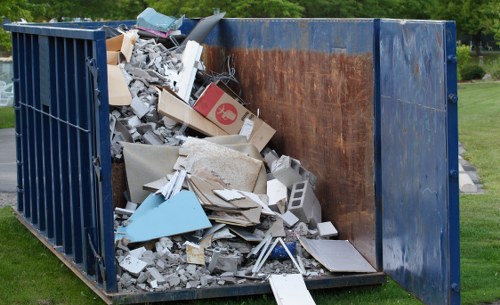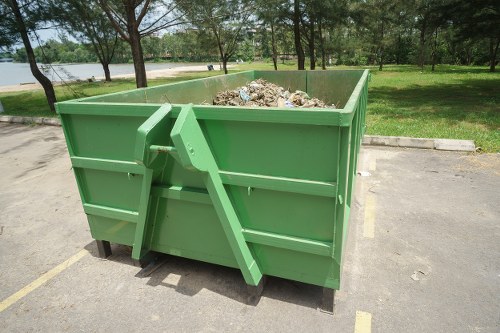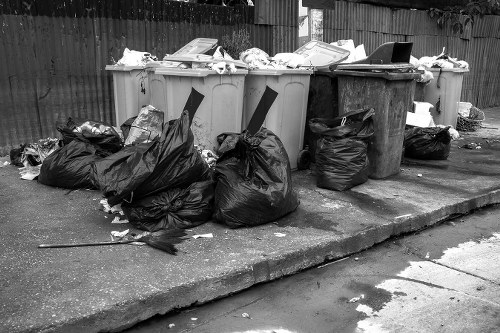Comprehensive Guide to Office Clearance in Flat Clearance
Understanding Office Clearance

Office clearance is a critical process that ensures a smooth transition when relocating or shutting down a business space. It involves the systematic removal of office furniture, equipment, and other assets, ensuring minimal disruption to business operations.
Proper office clearance not only helps in maintaining a clutter-free workspace but also plays a significant role in asset management and disposal. Whether you are moving to a new location or downsizing, understanding the nuances of office clearance is essential.
Engaging professional office clearance services can streamline the process, offering expertise in handling various items and adhering to safety and environmental regulations.
Process of Flat Clearance

Flat clearance, on the other hand, focuses on residential spaces. It involves clearing out personal belongings, furniture, appliances, and other household items. Similar to office clearance, flat clearance requires careful planning and execution to ensure efficiency and compliance with local regulations.
The process typically includes sorting items, determining what to keep, donate, sell, or dispose of. Professional flat clearance services can assist in managing large volumes of items, providing logistical support, and ensuring that the clearance is completed within the desired timeframe.
Additionally, flat clearance often involves dealing with sentimental items, making the process more emotionally charged for the residents involved.
Key Components of Office Clearance

- Assessment: Evaluating the items to be cleared and planning the clearance strategy.
- Sorting and Categorizing: Separating items based on their condition and future use.
- Removal: Safely transporting items to the designated location.
- Disposal: Properly disposing of non-reusable items in compliance with environmental standards.
- Cleaning: Ensuring the cleared space is clean and ready for its next use.
Essential Steps for a Successful Flat Clearance

- Planning: Outline the scope and timeline of the clearance.
- Inventory: Create a detailed list of items to be cleared.
- Sorting: Decide what to keep, donate, sell, or dispose of.
- Hiring Professionals: Engage reputable clearance services for efficient execution.
- Final Inspection: Ensure all items are cleared and the space is clean.
Benefits of Professional Clearance Services

Hiring professional clearance services for both office and flat clearance offers numerous advantages:
- Efficiency: Professionals have the expertise to execute the clearance swiftly and effectively.
- Safety: Proper handling of heavy and delicate items minimizes the risk of damage and injury.
- Compliance: Adherence to local disposal regulations ensures environmentally responsible clearance.
- Cost-Effective: Saves time and resources by avoiding potential damages and delays.
- Stress Reduction: Alleviates the burden of managing a large-scale clearance independently.
By leveraging the expertise of professional clearance services, businesses and individuals can focus on their core activities without the hassle of managing the clearance process.
Environmental Considerations in Clearance

Environmental sustainability is a crucial aspect of both office and flat clearance. Professionals prioritize eco-friendly disposal methods, ensuring that recyclable and reusable items are appropriately handled. This not only minimizes the environmental footprint but also aligns with corporate social responsibility goals.
Implementing green clearance practices involves:
- Recycling electronic waste and paper products.
- Donating usable furniture and appliances to charitable organizations.
- Proper disposal of hazardous materials.
- Reducing landfill contributions by maximizing item reuse.
Adopting these practices ensures that the clearance process contributes positively to environmental conservation efforts.
Cost Factors in Clearance Services

The cost of clearance services varies based on several factors:
- Volume of Items: Larger quantities require more resources and time.
- Type of Items: Specialized items like electronics or hazardous materials may incur additional charges.
- Accessibility: Difficult-to-reach locations can increase labor costs.
- Timeframe: Faster turnaround times may come at a premium.
- Additional Services: Services like deep cleaning or repairs can add to the overall cost.
Understanding these factors helps in budgeting effectively for clearance services, ensuring transparency and avoiding unexpected expenses.
Choosing the Right Clearance Service Provider

Selecting a reputable clearance service provider involves evaluating several criteria:
- Experience: Established companies with a proven track record offer reliability.
- Licensing and Insurance: Ensures legitimacy and protection against potential damages.
- Customer Reviews: Feedback from previous clients provides insights into service quality.
- Comprehensive Services: Providers offering a full range of services can handle all aspects of clearance.
- Transparent Pricing: Clear and upfront pricing helps in making informed decisions.
Conducting thorough research and comparing multiple providers ensures the selection of a service that meets specific needs and standards.
Final Steps After Clearance

Once the clearance is complete, it's essential to perform a final walkthrough to ensure that all items have been removed and the space meets the desired condition. This step helps in identifying any overlooked items and ensures that the clearance aligns with the agreed-upon plan.
Additionally, updating records and inventories post-clearance helps in maintaining accurate asset management, facilitating future audits, and ensuring compliance with organizational policies.
Lastly, expressing gratitude to the clearance team fosters positive relationships and may be beneficial for any future service needs.
Common Challenges in Office and Flat Clearance

Clearing out an office or flat comes with its set of challenges:
- Time Constraints: Tight schedules can pressure the clearance process.
- Emotional Attachment: Particularly in flat clearance, letting go of personal items can be difficult.
- Logistical Issues: Navigating large or complex spaces requires careful planning.
- Regulatory Compliance: Ensuring disposal methods meet legal standards can be intricate.
- Unforeseen Obstacles: Unexpected items or conditions may arise, necessitating adaptable solutions.
Addressing these challenges proactively with the help of professionals can ensure a smoother clearance experience.
Technological Advancements in Clearance Services
The clearance industry has witnessed significant technological advancements that enhance efficiency and effectiveness:
- Inventory Management Software: Streamlines tracking and organizing items for clearance.
- Eco-Friendly Disposal Technologies: Facilitates better recycling and waste management practices.
- Automated Vehicles and Equipment: Improves the speed and safety of moving items.
- Online Booking Platforms: Simplifies the scheduling and coordination of clearance services.
- Data Security Measures: Ensures the protection of sensitive information during office clearance.
Integrating these technologies results in more streamlined operations, reduced costs, and enhanced service quality.
Legal Considerations in Clearance
Compliance with legal requirements is paramount during the clearance process:
- Data Protection: Ensuring the secure disposal of sensitive information, particularly in office clearance.
- Waste Disposal Regulations: Adhering to local laws regarding the disposal of various materials.
- Licensing: Verifying that the clearance service provider holds the necessary licenses.
- Contracts and Agreements: Clearly outlining terms and conditions to prevent disputes.
- Health and Safety Standards: Ensuring the clearance process does not pose any health risks.
Addressing these legal aspects helps in avoiding potential fines, legal challenges, and ensures a responsible clearance process.
Customized Clearance Solutions
Every office and flat has unique clearance needs. Customized clearance solutions cater to the specific requirements of each client, offering tailored services that align with individual circumstances.
Examples of customization include:
- Special Item Handling: Managing the clearance of delicate or valuable items with extra care.
- Scheduling Flexibility: Offering clearance services during off-hours to minimize disruption.
- Storage Solutions: Providing temporary storage for items that need to be held for a specific period.
- Integrated Services: Combining clearance with related services like moving, cleaning, or renovation.
- Personalized Support: Assigning dedicated coordinators to oversee the clearance process.
Customized solutions ensure that the clearance process is efficient, effective, and tailored to meet the unique needs of each client.
Future Trends in Clearance Services
The clearance industry continues to evolve with emerging trends shaping its future:
- Increased Automation: Leveraging AI and robotics to enhance clearance operations.
- Sustainable Practices: Emphasizing greener clearance methods and circular economy principles.
- Personalization: Offering more tailored services to meet diverse client needs.
- Integration with Smart Technologies: Utilizing IoT devices for better monitoring and management.
- Expansion of Services: Broadening the range of services to include refurbishment, resale, and more.
Staying abreast of these trends enables clearance service providers to enhance their offerings and meet the evolving demands of clients.
Conclusion
Office and flat clearance are essential processes that facilitate smooth transitions during relocations, shutdowns, or downsizing. Engaging professional clearance services ensures efficiency, compliance, and peace of mind.
From meticulous planning and execution to embracing sustainable practices and technological advancements, the clearance industry is poised to offer increasingly effective solutions tailored to diverse needs.
Ready to simplify your clearance process? Contact us today and let our experts handle your office or flat clearance with professionalism and care.

